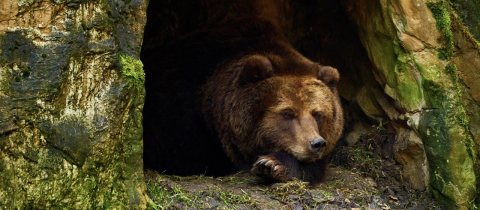Snow crystals—better known as snowflakes—are intricate, delicate, tiny miracles of beauty. Their very existence seems unlikely, yet incomprehensible numbers of them fall every year to iteratively construct wintery wonderlands.
Every snowflake is formed of around 100,000 water droplets in a process that takes roughly 30-45 minutes. Even with this level of complexity contributing to each and every snow crystal, it seems nearly impossible that every single flake is truly singularly matchless. Yet, the scientific explanation of snow formation can explain how every snowflake tells its life story, and every story is unique.
The first known reference to snowflakes’ unique shapes was by a Scandinavian bishop, Olaus Magnus, in 1555, but he was a touch mistaken in some of his proposed designs.

Photo source: http://www.snowcrystals.com/history/history.html
Snowflakes’ six-fold symmetry was first identified in 1591 by English astronomer Thomas Harriot. Still, a scientific reasoning for this symmetry wasn’t proposed until 1611 when Johannes Kepler, a German astronomer, wrote The Six-Cornered Snowflake. Indeed, almost all snowflakes exhibit a six-fold symmetry—for reasons explained here—however, they rarely can be found with 3- or 12-fold symmetry.
The notion that no two snowflakes are alike was put forth by Wilson Bentley, a meteorologist from Vermont who took the first detailed photos of snowflakes between 1885 and 1931. He went on to photograph over 5000 snow crystals and, in the words of modern snowflake expert Kenneth Libbrecht, “did it so well that hardly anybody bothered to photograph snowflakes for almost 100 years.” Bentley’s assertion of snowflakes’ unique natures might be 100 years old, but it has held up to scientific scrutiny. Understanding how snow forms can help us understand precisely how nature continues to create novel snowflake patterns.
Snow crystals begin forming when warm moist air collides with another mass of air at a weather front. The warm air rises, cooling as it does, and water droplets condense out of it, just like when your shower deposits steam onto your bathroom mirror. Unlike in your bathroom, however, these water droplets don’t have a large surface to attach to and instead form tiny droplets around microscopic particles in the air like dust or even bacteria. Big aggregates of these drops are what form clouds.
If the air continues to cool, the water enters what’s called a supercooled state. This means that they are below 0˚C, the freezing point of pure water, but still a liquid. Ice crystals will start to grow within the drop only once given a nucleation point, a position from which ice crystals can begin to grow. If you’ve ever seen the frozen beer trick, it relies on the same mechanics.
Once a droplet is frozen, water vapour in the surrounding air will condense onto it, forming snow crystals, aka snowflakes. Not every droplet freezes but those that don’t will evaporate, providing more water vapour to condense onto the frozen ones. Once roughly 100,000 droplets have condensed onto the crystal, it’s heavy enough that it falls to earth.
The crystal patterns formed when the water vapour condenses onto a growing flake are highly dependent on temperature, and how saturated the air around it is. Below you can see a Nakaya diagram. Created in the 1930s and named for its creator, Japanese physicist Ukichiro Nakaya, it shows the typical shapes of snow crystals formed under different supersaturation and temperature conditions.

Photo source: http://www.snowcrystals.com/morphology/morphology.html
Above roughly -2˚C, thin plate-like crystals tend to form. Between -2˚C and -10˚C, the formations are slender columns. Colder still, -10˚C and -22˚C herald the production of the wider thin plates we’re most used to, and below -22˚C comes a rarely seen mix of small plates and columns. Snow crystals grow rapidly and form complex, highly branched designs when humidity is high and the air is supersaturated with water vapour. When humidity is low, the flakes grow more slowly, and the designs are simpler.
As a growing snowflake moves through the air, it encounters countless different microenvironments with slightly different humidity and temperature, each affecting its growth pattern. In this way, the shape of a snowflake tells its life story—the second-by-second conditions it encounters determine its final form. That’s where the unique nature of each snowflake comes from.
Kenneth Libbrecht is a snowflake scholar—a professor of physics at California Institute of Technology who has dedicated years of his career to uncovering the mysteries of snow crystals. He was even a consultant on the movie Frozen! He grows snowflakes in his laboratory using specialized chambers under highly controlled environmental conditions. Growing multiple snow crystals very closely together under essentially identical conditions, Libbrecht can create ostensibly identical snowflakes. But even still, he considers them more like identical twins. Can you visually see a difference between them? No, not really. But if you were to zoom in, and in, and in, on some level, you would be able to find differences.
Libbrecht thinks that the question of whether there have ever been identical snowflakes is just silly. “Anything that has any complexity is different than everything else,” even if you have to go down to the molecular level to find it.







